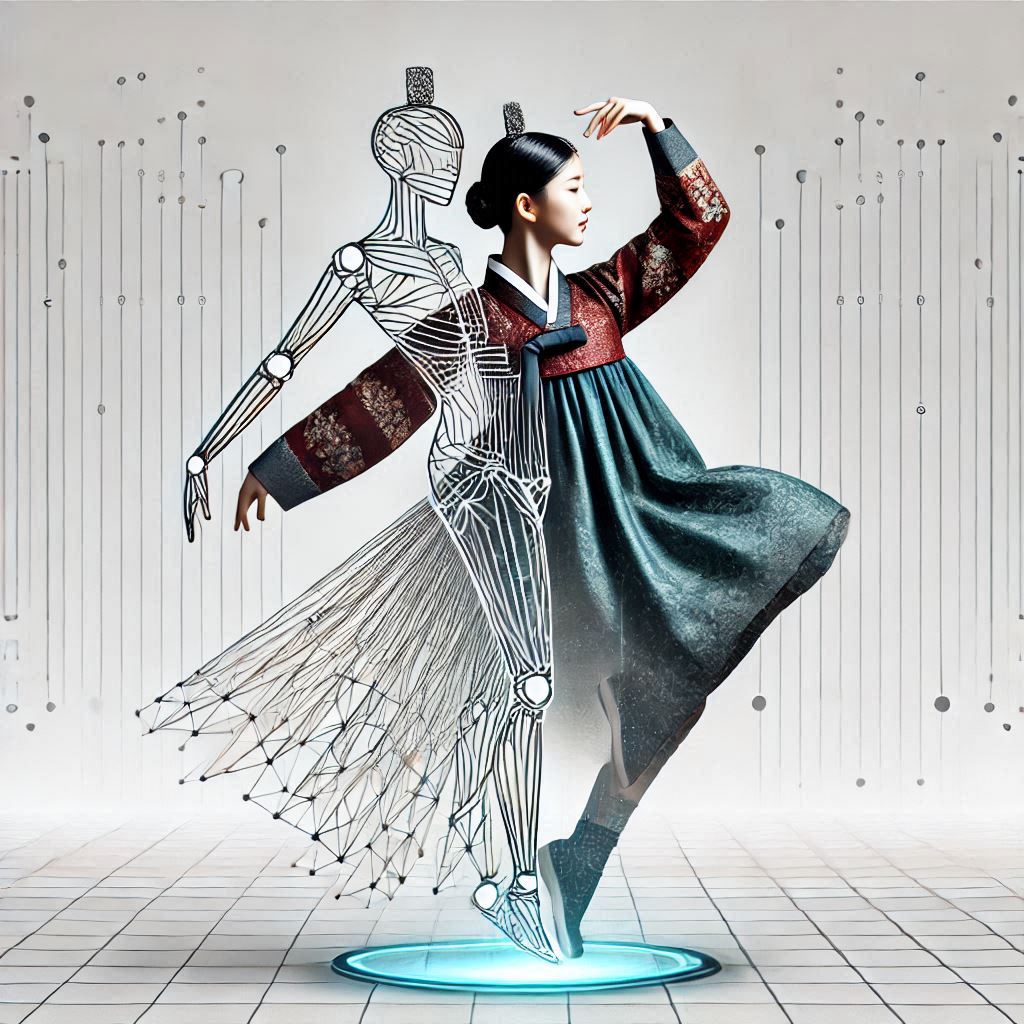
This research develops an AI-based system using BlazePose and a metadata-enhanced framework to recognize and classify Korean traditional dance movements in real time, contributing to cultural preservation and modern dance education.
Have you ever watched a mesmerizing traditional dance performance and wondered how the intricate movements are passed down through generations? Preserving cultural heritage is no small feat, especially when it comes to art forms that rely heavily on physical expression. But what if artificial intelligence (AI) could step in to help? 🤖🌐
In a groundbreaking study, researchers at the Gwangju Institute of Science and Technology in South Korea developed an innovative AI-based system that can recognize and classify Korean traditional dance movements in real time. Using advanced AI models and metadata-enhanced datasets, this project opens new doors for preserving intangible cultural heritage and modernizing dance education.
Let’s explore how this digital revolution is unfolding! 🚀
Traditional dances hold deep cultural significance, representing a community's history, values, and artistic expression. In Korea, traditional dance forms like Seungmu and Buchaechum are known for their elegant movements that embody cultural stories passed down through centuries.
However, preserving these dances is challenging. Unlike written records or static artifacts, dance involves continuous motion, making it harder to document accurately. That's where AI comes in! By applying machine learning models to analyze and recognize dance movements, researchers can capture these fleeting moments with precision.
This project focused on five fundamental Korean dance movements, aiming to create a real-time recognition system that could identify these movements accurately and efficiently. The results? A huge leap forward in digital preservation!
The core of this study lies in the use of BlazePose, an open-source pose estimation model developed by Google. BlazePose identifies skeletal key points from video footage, creating a digital skeleton that tracks body movements.
Here’s how it works:
In simpler terms, BlazePose acts like the eyes of the system, detecting the dancer’s movements, while the Bi-LSTM architecture acts like the brain, analyzing the flow of movements to identify patterns.
This combination allows the system to recognize dance movements in real time—a game-changer for cultural preservation! 🎉
The study focused on five fundamental movements of Korean traditional dance:
These movements are essential building blocks of Korean dance, each carrying deep cultural meaning. The AI system’s ability to recognize these gestures accurately marks a significant step toward digitizing dance traditions.
Dance recognition isn’t as simple as it sounds. Unlike static images, dance involves continuous motion, which means the AI has to track movements across time. Some key challenges include:
To overcome these hurdles, the researchers customized their AI model with a metadata-enhanced dataset, ensuring that the system learned the unique characteristics of Korean traditional dance.
Cultural heritage isn’t just about preserving ancient artifacts—it’s also about keeping traditions alive. In the digital age, we need modern tools to ensure these traditions don’t fade away.
This AI project does just that! By digitizing Korean traditional dance, it helps:
And the best part? The methodology used in this study can be applied to other dance forms around the world, making it a global solution for preserving intangible heritage. 🌎
The possibilities of using AI for motion recognition extend far beyond the dance floor. Here’s how this technology could impact other fields:
In biology, understanding animal behavior is crucial for conservation efforts and discovering new species. By adapting AI models like BlazePose, researchers could:
With real-time motion analysis, biologists could gather valuable insights without intrusive observation methods, making research more ethical and effective.
Workplace safety is a top priority in industries like construction, manufacturing, and healthcare. AI-based motion recognition systems could:
By integrating AI systems into workplaces, companies could create safer environments, reduce injuries, and improve overall productivity.
The possibilities are endless! Here’s what the future holds:
With continued research and development, AI could become an essential tool for preserving cultural heritage across the globe.
This study highlights a beautiful synergy between tradition and technology. By using AI to preserve Korean traditional dance, researchers are ensuring that these cultural treasures continue to inspire future generations.
As we dance into the future, let’s celebrate how innovation can help keep our past alive. After all, culture is the soul of humanity, and technology is our way of making sure it’s never forgotten. 🎎📚